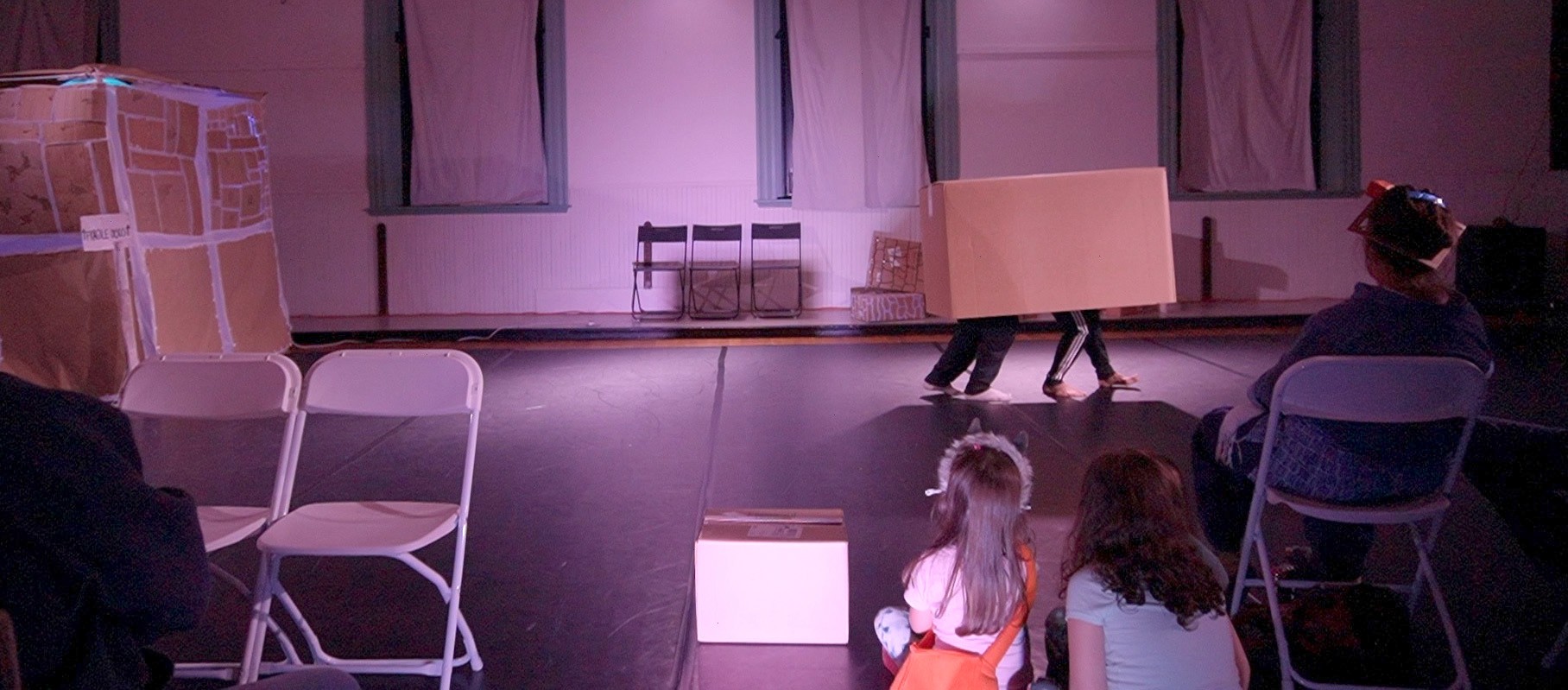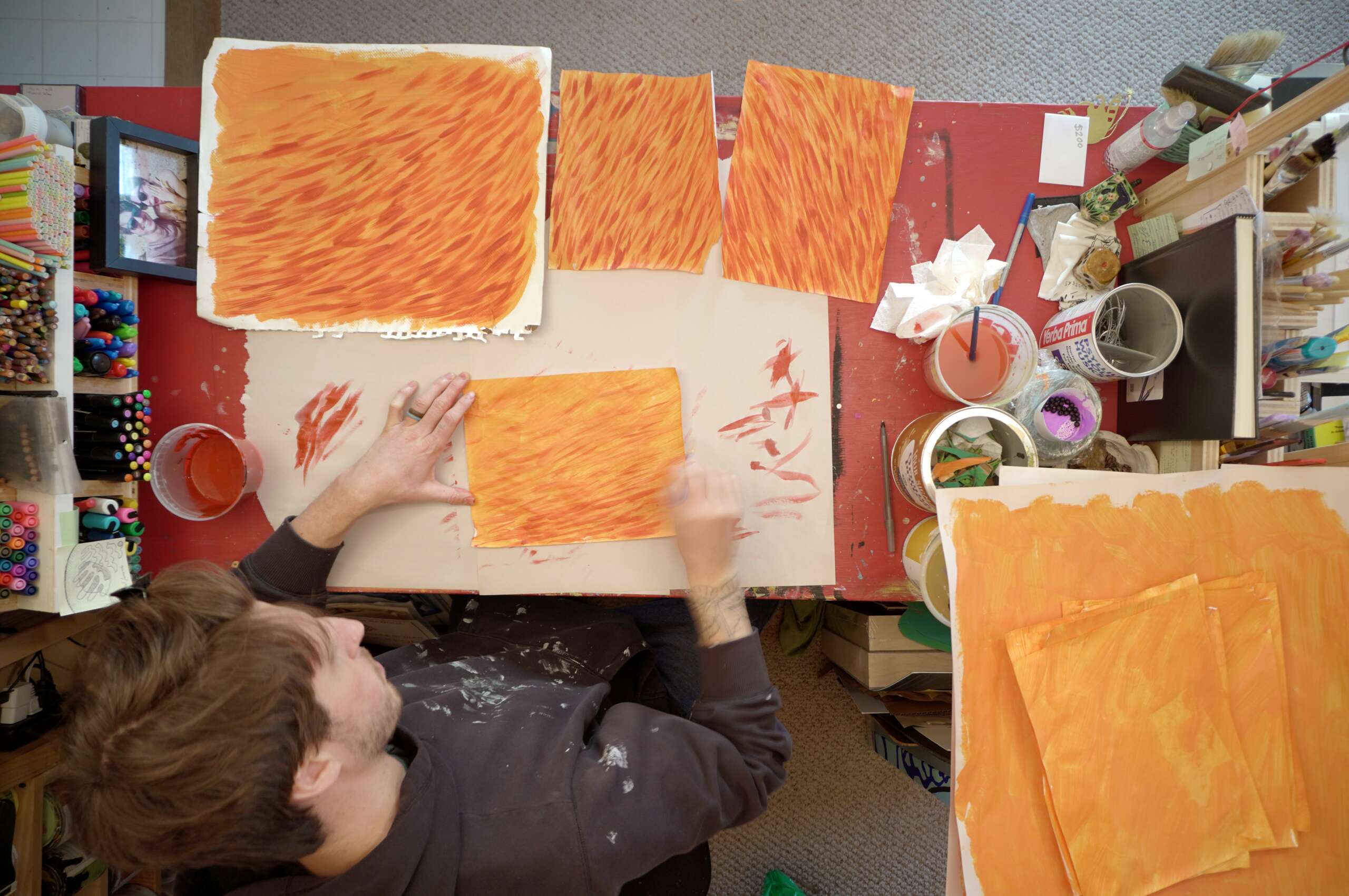We caught up with the brilliant and insightful Michael Lamarche a few weeks ago and have shared our conversation below.
Hi Michael, thanks for joining us today. Can you talk to us about a project that’s meant a lot to you?
I’d like to think that if I knew my life was coming to an end soon and a loved one were to ask me what my most meaningful project has been I’d reflect on the massive project that is understanding my self. However, in this case I am talking about the most meaningful project with respect to my creative endeavors and the answer to this is, without a doubt, Scribble.
There was a fateful day in which I was scrolling on social media and, with each scroll, I found myself plummeting deeper and deeper into self doubt from comparison to others (specifically to other artists). Theodore Roosevelt once said, “Comparison is the thief of joy.” I definitely agree with this sentiment but I’d like to bring it to an artist’s point of view and say that comparison is also the thief of creativity. I do nothing of creative value when I am overwhelmed by my ego. In the aftermath of this aforementioned depressive state, I was visited by a spark of imagination which was tapping me on my shoulder and itching to answer the question: what do we do about this problem? The question soon morphed to become: what is the opposite of individualism? The next thing I knew, I had my head down in books about creative cooperatives because I was interested in learning about groups of artists who work together and who uplift each other. The research process alone was beginning to remedy the stranded-in-the-desert-like existence of art making and sharing on social media. I had reached out about these urges for creative collaboration to some artist friends and they were amazingly supportive, joining me with their hearts and minds. Scribble’s first show, “Cardboard Box” was in November 2022, and we are about to present our fifth show “Animal Party” in April 2024.
Scribble’s growth has not always been easy but it has certainly always been rewarding. Scribble practices cooperative methods of art creation, presentation and revenue management. Additionally, Scribble is multi-modal and celebrates performance art, installation art, video art, theater, visual art and their intersecting genres all in one show.


Michael, before we move on to more of these sorts of questions, can you take some time to bring our readers up to speed on you and what you do?
I grew up in the Cape Ann area on the east coast of Massachusetts with an artist mother who used to teach after-school art classes in our home. At about ten years old, in my dream-big phase, I wanted to be the next Tim Burton and would borrow (sometimes steal – sorry mom!) my mom’s video camera and make videos of anything me and my friends could think of, often hilariously campy short horror movies. Eventually, after a first try at college, I felt that the film industry wasn’t for me. I ran around with my friends playing drums in several punk and reggae bands until I finally started to feel my passion come to life: visual art. I found that I couldn’t stop trying to make art, learn about art, learn about the art world and talk about art. Through some research I learned that even some of the most recognized artists need a day job (especially in late-stage capitalism) so I began to see myself teaching art at a middle or high school.
Last year I applied to be a paraprofessional at the high school I went to growing up. I was hired and have really enjoyed the job so far save for the pay rate. I look forward to passing the art MTEL (Massachusetts Tests for Educator Licensure) so that I can begin to apply to art teaching positions. As for previous employment, I’ve done it all. I’ve been a paper boy, barista (twice), farm hand, cook, ice loader for fishing vessels, carpenter, art dealer/handler’s assistant, personal care assistant, woodworker, dog walker and groundskeeper for a handful of art galleries. It was my time in the art world in which I reflected deeply on the problems in our society with lack of art accessibility.
In some instances, as an assistant to an art handler/dealer, I was hanging pieces of art that were worth five times my entire life savings and this is in light of the fact that the businesses I worked for were distributing works of art from local independent artists. Gloucester is an art hub, sure, but it’s not New York or LA. My reaction to witnessing art being hung solely on the pristine interior walls of wealthy homes was that of arriving at the proverbial table that so many have been sitting at for so long: We’re doing this all wrong. Art is for everyone. Everyone should be able to share their art. Everyone should be able to enjoy art. Thus, my journey has led me to efforts in both teaching art and organizing Scribble.
Scribble is what I am most proud of. Our tickets are a sliding scale from zero to 15 dollars. I’m proud of the fact that artists can join in a show without a juror process. There’s nothing that crushes a spirit more than working really hard on a piece of art and having it be turned down because it didn’t make the cut. With our societies’ art systems in place as they are, having a juror is so very normal. It’s just part of what we seem to continuously regurgitate with little question about it. Surprisingly, when you say yes to everyone (except for any person producing works that would be hateful to any group of people. Thankfully, this has yet to happen in Scribble) the work is very well received! An audience member came to me after our “Truth Telling” show saying that Scribble is like “witnessing a group think very diversely about one thing”. Another audience member – and now a participating scribbler – came to me after our “Shadow” show joyfully expressing that “Scribble is like a creative family event, but in a cool way”. There is room for everyone. Everyone deserves to be able to make art and share it. I am aware that others are out there doing something similar but for this immediate community that I live in, there was a need.
In reflecting, I’m realizing that I can be pretty bold and initiate something new when I see the potential for change. The down side to this is I am not the best at upholding every problem at hand and delegating tasks to others but I’m slowly getting better. One of my favorite Tanzanian proverbs says: “Little by little, a little becomes a lot.” I feel like the older I get the more I live by this rule. Also: I get by with a little help from my friends. None of this would have been possible without my fellow scribblers who believe in the mission and who work by my side. If it seemed possible, we’d have an interview with all ten of us together. In addition to their support I am eternally grateful to my fiancé; She is an epic root-like being, extremely patient with me when I have to vent like a mockingbird.


How can we best help foster a strong, supportive environment for artists and creatives?
In my view, there should be more open doors to artists of all backgrounds. Oftentimes, the boards of museums and institutions seem to respond to a need for greater diversity by checking a list that only helps make their businesses look better on paper. If they really cared about diversity they would make room for people of all backgrounds. They need to invite people of all races, gender identities, classes, education levels, abilities, and backgrounds to the table not just in making and sharing art but in organization. When institutions fail to do this, they are missing out on the full potential of what art can be and, more importantly, they are causing harm to groups of people. There is harm when you take food away from others. There is room for everyone at the table. When we make room for everyone we unleash incredible collaborative potential. Make that room. We can all eat. There is enough food.


Do you think there is something that non-creatives might struggle to understand about your journey as a creative? Maybe you can shed some light?
Making art is another way of thinking. It’s another way of processing information. It’s a way of communicating things which cannot be said with words. It’s a way of accessing a higher power which, for me, can only be described as a thick web made of love and warmth connecting me to every other living being. This network isn’t a superficial one; it’s a network that is hard to witness but fully restorative like bathing in the sun after a long cold winter. When these things feel as if they are not accessible, creatives like myself feel like part of their purpose and even part of their being has been ripped away from them.
I am fighting for “low art” to take center stage and for “high art” – which, at its worst, keeps only those with privileged means inside their walls – to go backstage for a while. I want to see a stage that represents equality in all senses of the word. This oppressive trend toward high art began the moment that European colonizers touched down on the lands that they invaded and, among other atrocities, proclaimed their biased value on the material world. It began when the missionaries pushed their agenda with a denial of all forms of spiritual connectivity except those which benefitted themselves and their kings. It began when Emperors demanded the artists whom they enslaved to make them countless things so that they could prosper even into the afterlife. It is no surprise that this kind of a root takes so long to rip out of the ground. I believe in and uplift the many who are planting new trees which symbolize the catalyst toward a shifting away from these oppressive trends. Luckily, there are a few things that cannot be taken from anyone: love and imagination. As long as these exist, creativity will not be held down.


Contact Info:
- Website: https://michaellamarche.art/
- Instagram: @michael.and.art
- Youtube: https://www.youtube.com/channel/UCNSZ6lgrGmtK1wLVWdpzZkA
- Other: To view scribble’s website go to scribbletheartshow.com Scribble’s instagram: @scribbletheartshow


